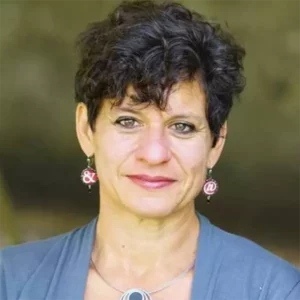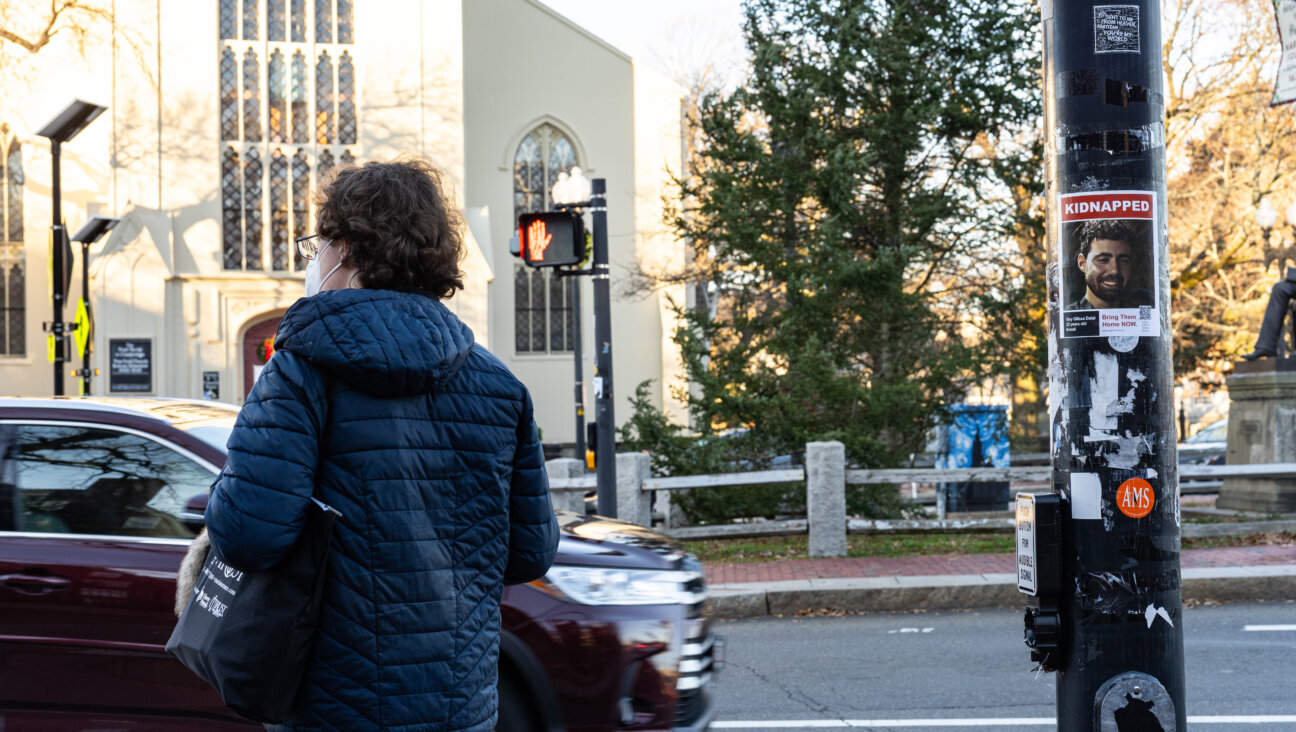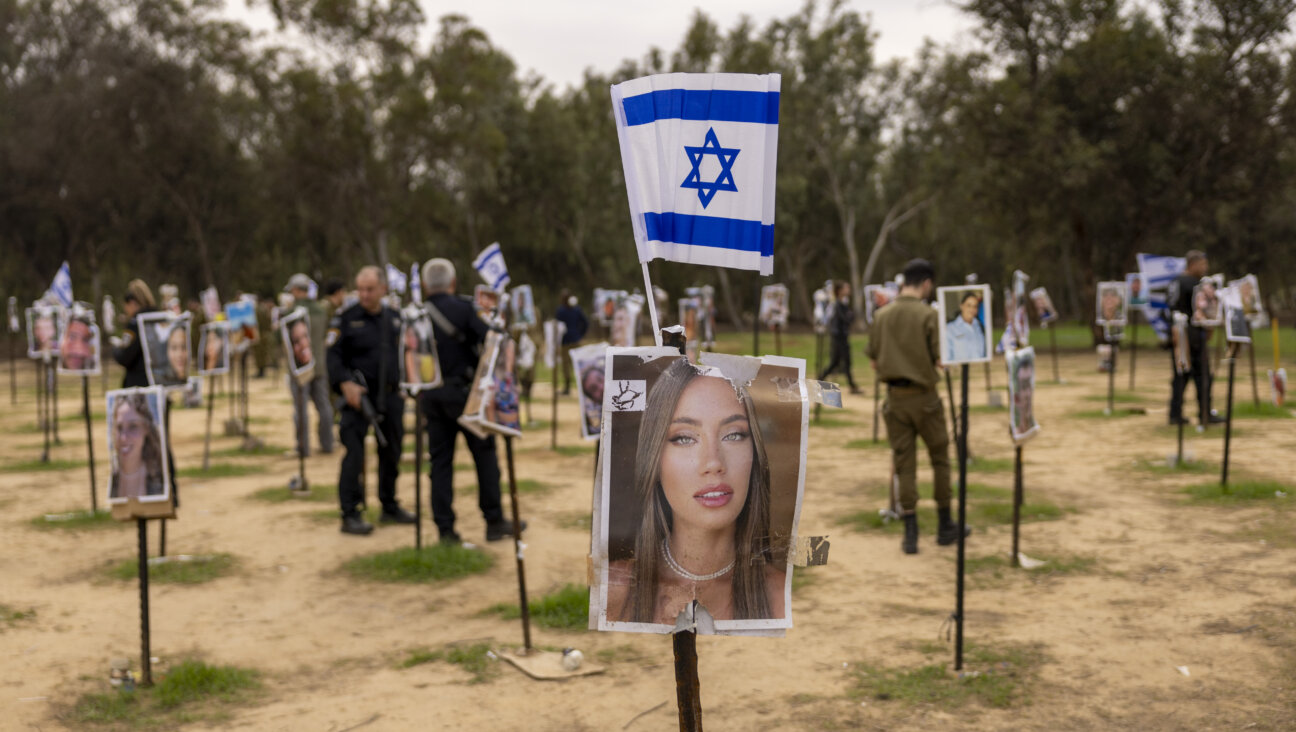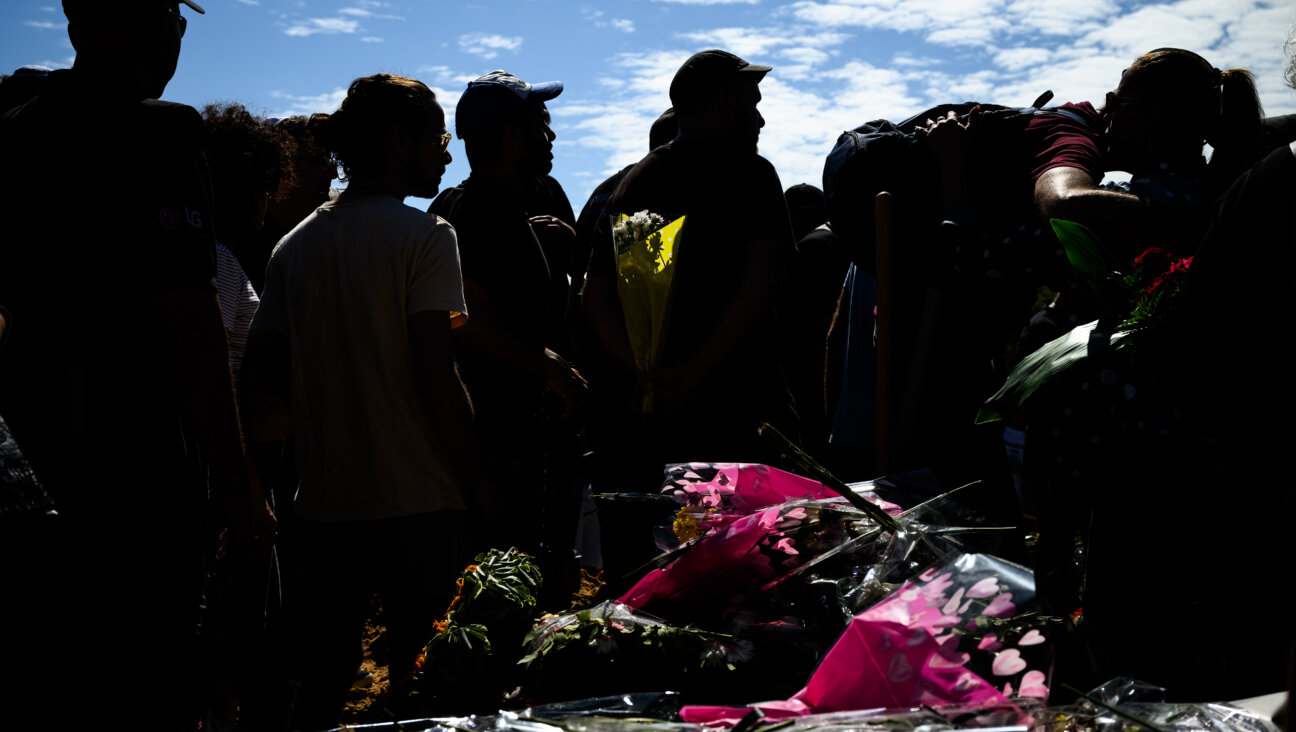Red stickers for killed, black for kidnapped: Bearing witness to the massacre at Kibbutz Nir Oz
‘It’s like this kibbutz I know, but where is everybody?’ asked one hostage’s daughter

Survivors have placed stickers on residents’ mailboxes. The red ones say “murdered” in Hebrew. Black marks the 71 hostages taken. Blue signals the 40 who have been released. Photo by Rina Castelnuovo
NIR OZ, Israel — It’s the first thing they tell you when you arrive on this kibbutz less than a mile from Gaza: 1 out of 4 people living here on the morning of Oct. 7 were killed or kidnapped.
You see starkly what that means inside the dining hall, where survivors have placed stickers on residents’ mailboxes. The red ones, 46 of them in all, say “murdered” in Hebrew. Black marks the 71 hostages taken. Blue signals the 40 who have been released.
There were 417 residents of this car-free kibbutz, whose name translates to “Meadow of Strength,” Oct. 6. Now, there are yellow ribbons tied around its trees, soldiers camping in the children’s house, archaeologists preserving evidence of how the Hamas massacre unfolded, journalists in bulletproof vests from Greek, Hungarian and Japanese TV outlets, a few stray cats whining amid the wreckage.
“When I walk like this, I can imagine that nothing happened,” Inbal Albini, 55, told me as we strolled the curved bucolic paths where she grew up. “It’s kind of strange. It’s like this kibbutz I know, but where is everybody? Why is this house burned? Why are there soldiers inside?”
Alibini’s half-brother, Danny Darlington, 34, was killed on Oct. 7 while visiting friends on Nir Oz. Her father, Chaim Peri, is one of the 31 kibbutz residents still being held captive by Hamas.
Peri is a filmmaker, sculptor, teacher and peace activist. He is 79, and had a heart attack a few years ago.
“He needs medication,” Albini said. “Sixty days underground. Even a normal person, a healthy person, a young person — who can be underground for 60 days? They don’t see light. We don’t know how much air they have. We don’t know what is going to happen next.”
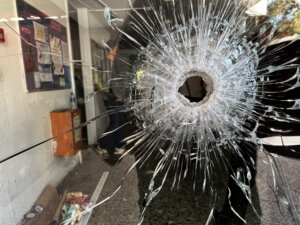
I arrived at Nir Oz just before 1 p.m. on Wednesday with three vans full of journalists. I’d been on the ground in Israel for a week, but it was my first trip to the south, to the scene. I knew I needed to go, but I was nonetheless wary — where exactly is the line, I wondered to myself, between bearing witness and voyeurism?
Albini moved away from the kibbutz when she joined the army at 18, and now lives in Kiryat Ono, a city of 41,000 east of Tel Aviv. This is her first visit since the attack. She is not a tour guide. “I don’t know exactly what happened in every house,” she said as we set out. “You can see it, you don’t have to talk much.”
You can see it. The first house we stopped at had a purple tricycle with its wheels melted off in the yard. A wine glass sat on the patio table, which itself was a puddle of melted plastic strewn with shards of broken glass. There was a Star of David made from popsicle sticks hanging from an awning. The rusted remains of a washing machine — was that here before or was it, too, destroyed in the attack?
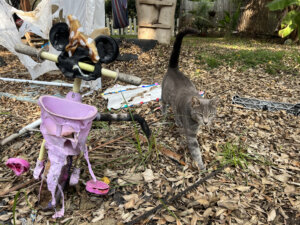
A “Kidnapped by Hamas” postage was pasted on the door: Tamir Adar, 38. I look him up on my phone, and learn he was a member of the kibbutz security squad, who left the house to gather ammunition when the alarms started to sound and texted his wife to lock all the doors and windows. She and their two children survived. Tamir’s 85-year-old grandmother, Yaffa Adar, was taken too, on the golf cart she used to get around, and released on the first night of the truce. She is a mother of three, grandmother of eight and great-grandmother of seven.
Next was Nurit Cooper’s house. She is 79 like Albini’s father, and was released along with Yocheved Lifshitz on Day 17. Lipfshitz, 83, lived on the edge of the kibbutz, in a large house whose lawn is littered with found-object sculptures made by her husband, Oded, who is 85 and remains in captivity.
The couple were among the founders of Nir Oz and regularly drove sick Palestinians from Gaza to Israeli hospitals for treatment. For some reason, they have an old road sign pointing to Gush Qatif, the Israeli settlements inside Gaza that were uprooted during the 2005 disengagement, posted on their roof.
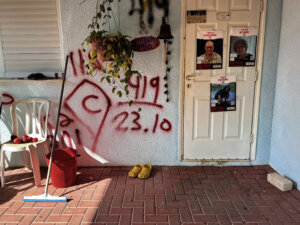
The Munder family. “In this house four people were kidnapped,” Albini said. Ruti and Avraham Munder, both 78; their daughter Keren, 54; and her son Ohad Munder-Zichri, who turned 9 in captivity. Keren’s brother Roi was murdered on Oct. 7 but, as The Times of Israel put it, no relatives were in Israel to sit shiva for him. Avraham Munder, the patriarch, remains in Gaza.
Their home has a mural of flowers on the outside wall that seems not to have been marred. In contrast, the Vanunu family’s safe room has a bunk-bed whose bottom mattress is covered in blood. Miraculously, according to a kibbutz spokesperson, Irit Lahav, nobody died there: The father’s arms were blown off but his wife, a veterinarian, managed to save him.
We came to a house with an iron sculpture out front, a figure whose body is formed from rusty horseshoes. There was a box filled with wooden train-track pieces. “This is my father’s house,” Albini said. He and his wife of 40 years, Osnat, have 13 grandchildren between them.
She told us their story. Like everyone else, they went to the safe room when the sirens sounded that morning, and after a few hours, “they heard shouting in Arabic,” Albini said. “They understood something is very wrong.”
“They made a big mess, broke things, took all the cupboards out, tried to get into the safe room,” she continued. “Went out and came back.”
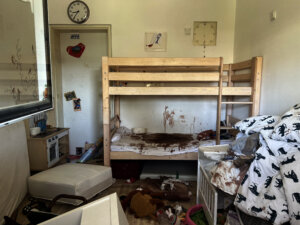
When the Hamas men returned, her father “pushed the door open, he pushed the terrorist that was there, who hit his head and left.” And when the Palestinians returned a third time, Alibi said, her father told his wife to hide in the safe room and walked outside to surrender.
“They talked English to him. They said, ‘Don’t fight us, we won’t kill you.’ His wife was hiding, she heard everything,” Alibini explained. “She stayed there another few hours until she was sure she heard the army coming. He saved his wife, because they didn’t realize there was somebody else.”
The released hostages from Nir Oz told Albini that they saw Peri inside the tunnels in Gaza, and “the most terrible thing for my father is that he does not know what happened to his wife,” she added. “Did they shoot her? Did she survive? One of the girls who came out was with him and she told us that he is really, really worried about her, he talks about it all the time.”
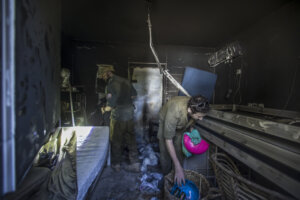
As she spoke, an old man appeared from a couple houses away. His name is Natan Bahat, and he moved to Nir Oz in 1958, a year after it was founded, after finishing his military service. Now he is 86.
Like the Peris and the Lipshitzes, the Munders and Tamir Adar’s wife and kids, Bahat went to his safe room when the alarms went off on Oct. 7. But the terrorists never came into his house. The only sign of them was a few old things stolen from a mud room outside.
Like the rest of the kibbutz’s survivors, Bahat was evacuated to a hotel in Eilat on the evening of Oct. 7. But he returned two weeks ago, and is back living in the house that Hamas passed over.
How are you? we asked. “Ani al haraglayim,” came the reply. (“I’m on my feet.”)
Why did you come back? I wondered. “Ayn bayit acher,” he said. (“I don’t have another home.”)
A message from our Publisher & CEO Rachel Fishman Feddersen

I hope you appreciated this article. Before you go, I’d like to ask you to please support the Forward’s award-winning, nonprofit journalism so that we can be prepared for whatever news 2025 brings.
At a time when other newsrooms are closing or cutting back, the Forward has removed its paywall and invested additional resources to report on the ground from Israel and around the U.S. on the impact of the war, rising antisemitism and polarized discourse.
Readers like you make it all possible. Support our work by becoming a Forward Member and connect with our journalism and your community.
— Rachel Fishman Feddersen, Publisher and CEO



